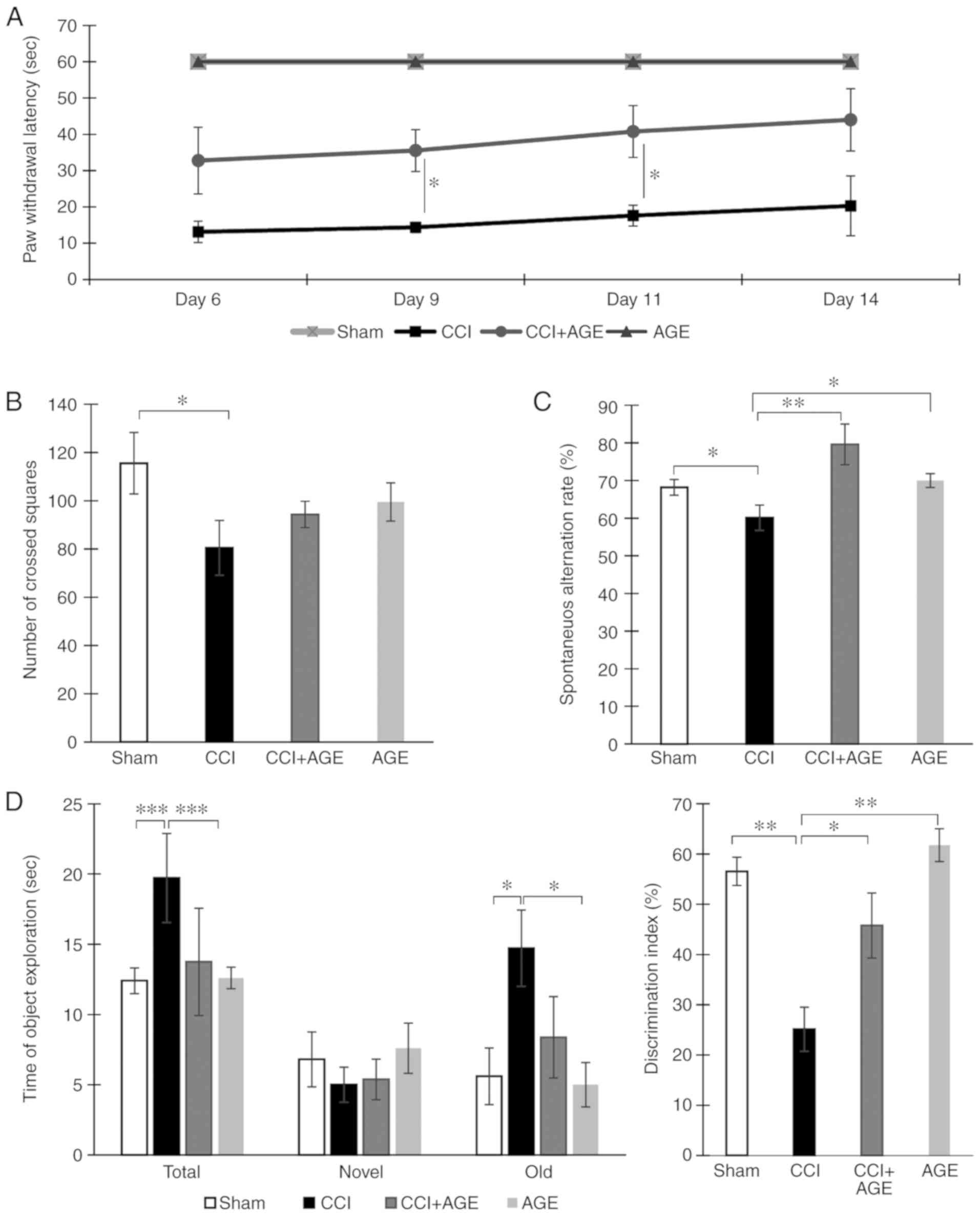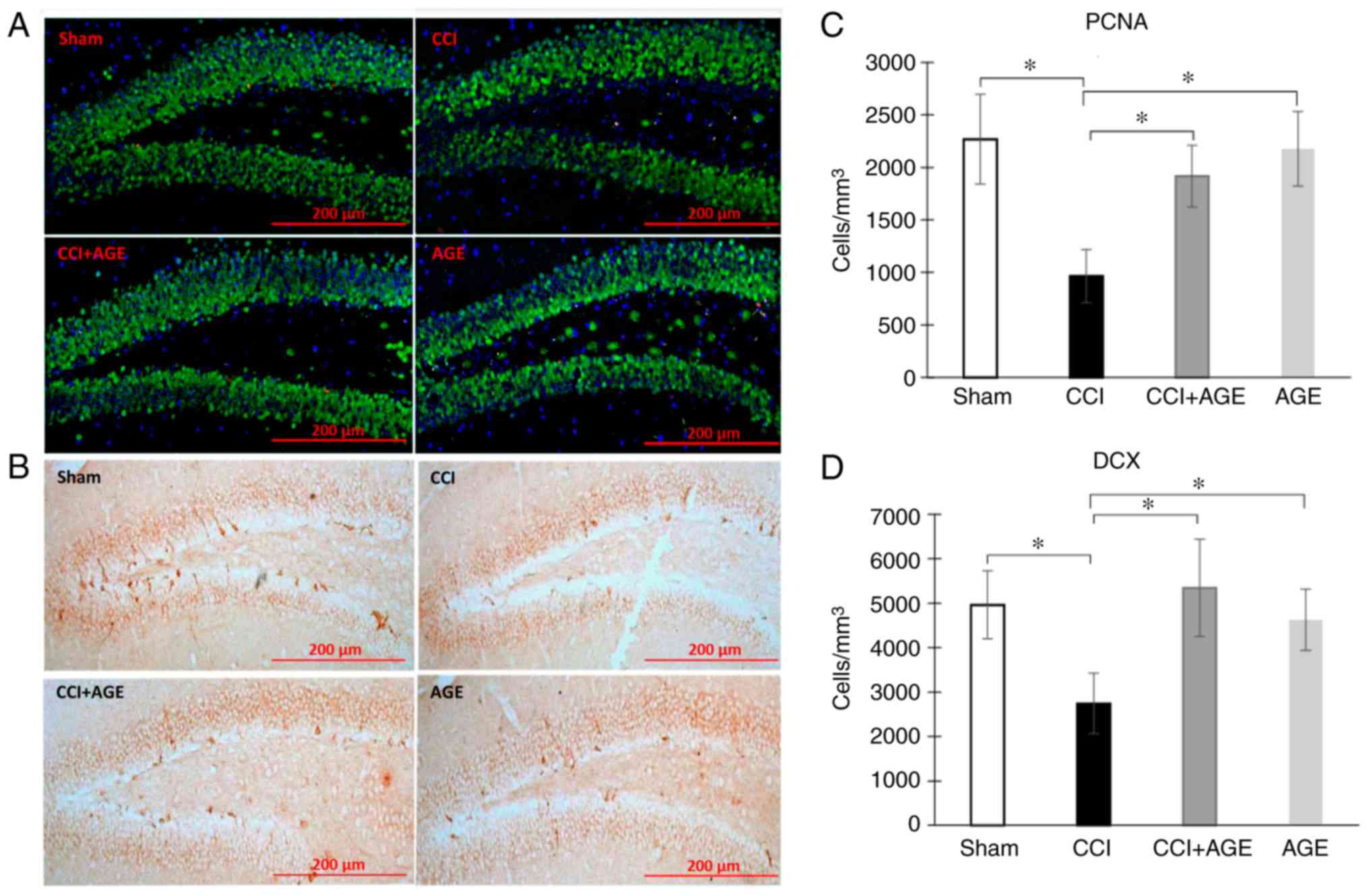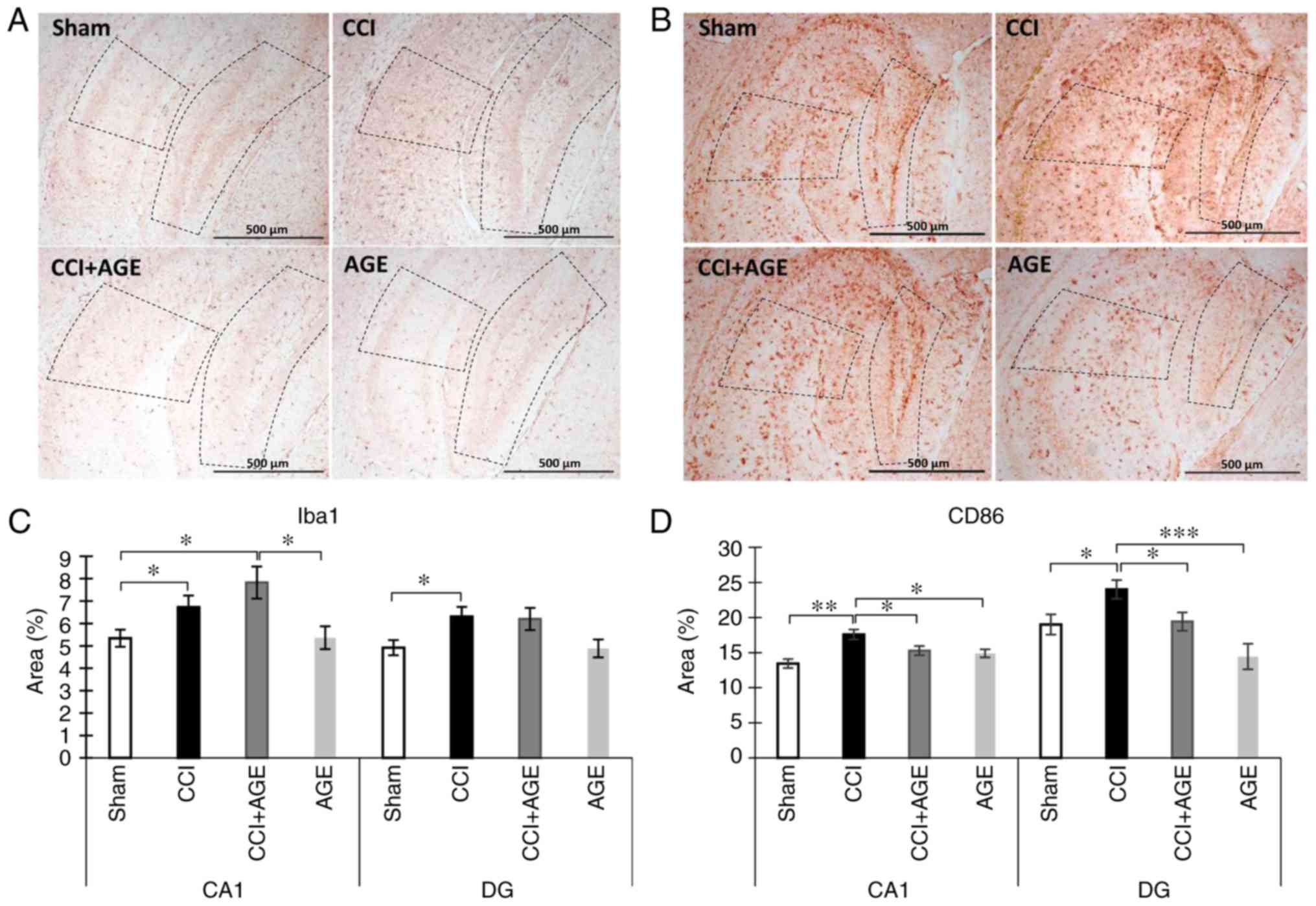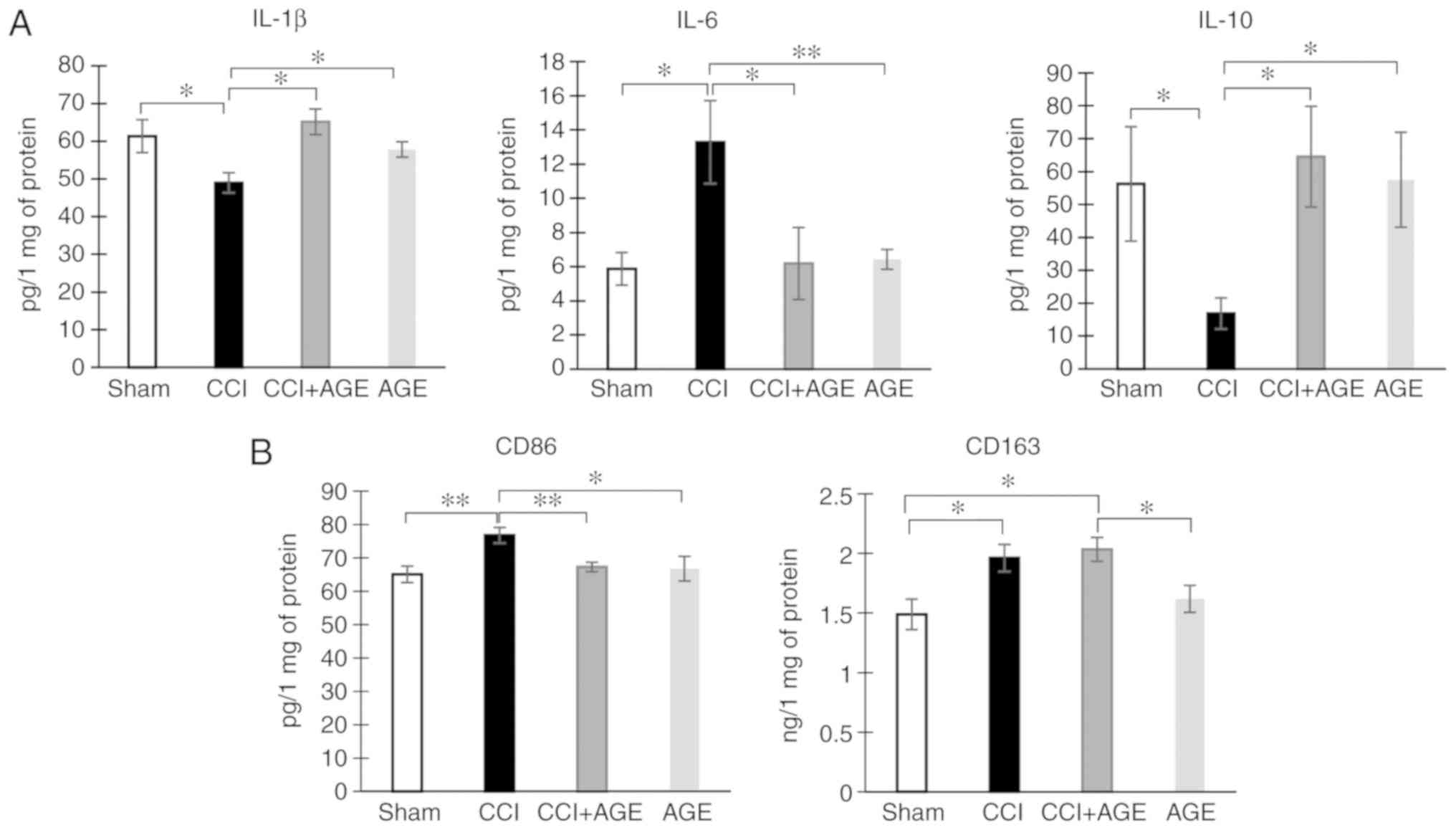|
1
|
Merskey H and Bogduk N: Pain terms: A
current list with definitions and notes on usage: Classification of
chronic pain. 2nd ed. Seattle: IASP Task Force on Taxonomy, USA;
pp. 154–196. 1994, ISBN.
|
|
2
|
Baron R, Binder A and Wasner G:
Neuropathic pain: Diagnosis, pathophysiological mechanisms, and
treatment. Lancet Neurol. 9:807–819. 2010. View Article : Google Scholar : PubMed/NCBI
|
|
3
|
McEwen BS: Plasticity of the hippocampus:
Adaptation to chronic stress and allostatic load. Ann N Y Acad Sci.
933:265–277. 2001. View Article : Google Scholar
|
|
4
|
Liu MG and Chen J: Roles of the
hippocampal formation in pain information processing. Neurosci
Bull. 25:237–266. 2009. View Article : Google Scholar : PubMed/NCBI
|
|
5
|
Deng W, Aimone JB and Gage FH: New neurons
and new memories: How does adult hippocampal neurogenesis affect
learning and memory? Nat Rev Neurosci. 11:339–350. 2010. View Article : Google Scholar : PubMed/NCBI
|
|
6
|
Sahay A and Hen R: Adult hippocampal
neurogenesis in depression. Nat Neurosci. 10:1110–1115. 2007.
View Article : Google Scholar : PubMed/NCBI
|
|
7
|
Revest JM, Dupret D, Koehl M, Funk-Reiter
C, Grosjean N, Piazza PV and Abrous DN: Adult hippocampal
neurogenesis is involved in anxiety-related behaviors. Mol
Psychiatry. 14:959–567. 2009. View Article : Google Scholar : PubMed/NCBI
|
|
8
|
Dranovsky A and Hen R: Hippocampal
neurogenesis: Regulation by stress and antidepressants. Biol
Psychiatry. 59:1136–1143. 2006. View Article : Google Scholar : PubMed/NCBI
|
|
9
|
Saxe MD, Battaglia F, Wang JW, Malleret G,
David DJ, Monckton JE, Garcia AD, Sofroniew MV, Kandel ER,
Santarelli L, et al: Ablation of hippocampal neurogenesis impairs
contextual fear conditioning and synaptic plasticity in the dentate
gyrus. Proc Natl Acad Sci USA. 103:17501–17506. 2006. View Article : Google Scholar : PubMed/NCBI
|
|
10
|
Argoff CE: The coexistence of neuropathic
pain, sleep, and psychiatric disorders: A novel treatment approach.
Clin J Pain. 23:15–22. 2007. View Article : Google Scholar : PubMed/NCBI
|
|
11
|
Fillingim RB, King CD, Ribeiro-Dasilva MC,
Rahim-Williams B and Riley JL III: Sex, gender, and pain: A review
of recent clinical and experimental findings. J Pain. 10:447–485.
2009. View Article : Google Scholar : PubMed/NCBI
|
|
12
|
Leite-Almeida H, Almeida-Torres L,
Mesquita AR, Pertovaara A, Sousa N, Cerqueira JJ and Almeida A: The
impact of age on emotional and cognitive behaviours triggered by
experimental neuropathy in rats. Pain. 144:57–65. 2009. View Article : Google Scholar : PubMed/NCBI
|
|
13
|
Reicherts P, Gerdes AB, Pauli P and Wieser
MJ: Psychological placebo and nocebo effects on pain rely on
expectation and previous experience. J Pain. 17:203–214. 2016.
View Article : Google Scholar
|
|
14
|
Li Q, Navakkode S, Rothkegel M, Soong TW,
Sajikumar S and Korte M: Metaplasticity mechanisms restore
plasticity and associativity in an animal model of Alzheimer's
disease. Proc Natl Acad Sci USA. 114:5527–5532. 2017. View Article : Google Scholar : PubMed/NCBI
|
|
15
|
Lister JP and Barnes CA: Neurobiological
changes in the hippocampus during normative aging. Arch Neurol.
66:829–833. 2009. View Article : Google Scholar : PubMed/NCBI
|
|
16
|
Schmidt M, Dubin AE, Petrus MJ, Earley TJ
and Patapoutian A: Nociceptive signals induce trafficking of TRPA1
to the plasma membrane. Neuron. 64:498–509. 2009. View Article : Google Scholar : PubMed/NCBI
|
|
17
|
McQuail JA, Frazier CJ and Bizon JL:
Molecular aspects of age-related cognitive decline: The role of
GABA signaling. Trends Mol Med. 21:450–460. 2015. View Article : Google Scholar : PubMed/NCBI
|
|
18
|
Jones MR, Ehrhardt KP, Ripoll JG, Sharma
B, Padnos IW, Kaye RJ and Kaye AD: Pain in the elderly. Curr Pain
Headache Rep. 20:232016. View Article : Google Scholar : PubMed/NCBI
|
|
19
|
Tyrtyshnaia AA, Manzhulo IV, Sultanov RM
and Ermolenko EV: Adult hippocampal neurogenesis in neuropathic
pain and alkyl glycerol ethers treatment. Acta Histochem.
119:812–821. 2017. View Article : Google Scholar : PubMed/NCBI
|
|
20
|
Bennett GJ and Xie YK: A peripheral
mononeuropathy in rat that produces disorders of pain sensation
like those seen in man. Pain. 33:87–107. 1988. View Article : Google Scholar : PubMed/NCBI
|
|
21
|
Bligh EG and Dyer WJ: A rapid method of
total lipid extraction and purification. Can J Biochem Physiol.
37:911–917. 1959. View
Article : Google Scholar : PubMed/NCBI
|
|
22
|
Ermolenko EV, Latyshev NA, Sultanov RM and
Kasyanov SP: Technological approach of 1-O-alkyl-sn-glycerols
separation from Berryteuthis magister squid liver oil. J Food Sci
Technol. 53:1722–1726. 2016. View Article : Google Scholar : PubMed/NCBI
|
|
23
|
Allen JW and Yaksh TL: Assessment of acute
thermal nociception in laboratory animals. Methods Mol Med.
99:11–23. 2004.PubMed/NCBI
|
|
24
|
Manzhulo IV, Ogurtsova OS, Kipryushina YO,
Latyshev NA, Kasyanov SP, Dyuizen IV and Tyrtyshnaia AA:
Neuron-astrocyte interactions in spinal cord dorsal horn in
neuropathic pain development and docosahexaenoic acid therapy. J
Neuroimmunol. 298:90–97. 2016. View Article : Google Scholar : PubMed/NCBI
|
|
25
|
Lysenko LV, Kim J, Henry C, Tyrtyshnaia A,
Kohnz RA, Madamba F, Simon GM, Kleschevnikova NE, Nomura DK,
Ezekowitz RA and Kleschevnikov AM: Monoacylglycerol lipase
inhibitor JZL184 improves behavior and neural properties in Ts65Dn
mice, a model of down syndrome. PLoS One. 9:e1145212014. View Article : Google Scholar : PubMed/NCBI
|
|
26
|
Bevins RA and Besheer J: Object
recognition in rats and mice: A one-trial non-matching-to-sample
learning task to study 'recognition memory'. Nat Protoc.
1:1306–1311. 2006. View Article : Google Scholar
|
|
27
|
Saura J, Tusell JM and Serratosa J:
High-yield isolation of murine microglia by mild trypsinization.
Glia. 44:183–189. 2003. View Article : Google Scholar : PubMed/NCBI
|
|
28
|
Ahmed Z, Shaw G, Sharma VP, Yang C,
McGowan E and Dickson DW: Actin-binding proteins coronin-1a and
IBA-1 are effective microglial markers for immunohistochemistry. J
Histochem Cytochem. 55:687–700. 2007. View Article : Google Scholar : PubMed/NCBI
|
|
29
|
Tang YU and Weidong LE: Differential roles
of M1 and M2 microglia in neurodegenerative diseases. Mol
Neurobiol. 53:1181–1194. 2016. View Article : Google Scholar
|
|
30
|
Van Praag H, Shubert T, Zhao C and Gage
FH: Exercise enhances learning and hippocampal neurogenesis in aged
mice. J Neurosc. 25:8680–8685. 2005. View Article : Google Scholar
|
|
31
|
Apkarian AV, Baliki MN and Geha PY:
Towards a theory of chronic pain. Prog Neurobiol. 87:81–97. 2009.
View Article : Google Scholar :
|
|
32
|
Schneider H, Pitossi F, Balschun D, Wagner
A, Del Rey A and Besedovsky HO: A neuromodulatory role of
interleukin-1β in the hippocampus. Proc Natl Acad Sci USA.
95:7778–7783. 1998. View Article : Google Scholar
|
|
33
|
Ye SM and Johnson RW: An age-related
decline in interleukin-10 may contribute to the increased
expression of interleukin-6 in brain of aged mice.
Neuroimmunomodulation. 9:183–192. 2001. View Article : Google Scholar
|
|
34
|
Galea J, Cruickshank G, Teeling JL, Boche
D, Garland P, Perry VH and Galea I: The intrathecal
CD163-haptoglobin-hemoglobin scavenging system in subarachnoid
hemorrhage. J Neurochem. 121:785–792. 2012. View Article : Google Scholar : PubMed/NCBI
|
|
35
|
Iannitti T and Palmieri B: An update on
the therapeutic role of alkylglycerols. Mar Drugs. 8:2267–2300.
2010. View Article : Google Scholar : PubMed/NCBI
|
|
36
|
Hajimoradi M, Hassan ZM, Pourfathollah AA,
Daneshmandi S and Pakravan N: The effect of shark liver oil on the
tumor infiltrating lymphocytes and cytokine pattern in mice. J
Ethnopharmacol. 126:565–570. 2009. View Article : Google Scholar : PubMed/NCBI
|
|
37
|
Vallieres L, Campbell IL, Gage FH and
Sawchenko PE: Reduced hippocampal neurogenesis in adult transgenic
mice with chronic astrocytic production of interleukin-6. J
Neurosci. 22:486–492. 2002. View Article : Google Scholar : PubMed/NCBI
|
|
38
|
Perez-Asensio FJ, Perpiñá U, Planas AM and
Pozas E: Interleukin-10 regulates progenitor differentiation and
modulates neurogenesis on adult brain. J Cell Sci. 126:4208–4219.
2013. View Article : Google Scholar : PubMed/NCBI
|
|
39
|
Pereira L, Font-Nieves M, Van den Haute C,
Baekelandt V, Planas AM and Pozas E: IL-10 regulates adult
neurogenesis by modulating ERK and STAT3 activity. Front Cell
Neurosci. 25:9–57. 2015.
|
|
40
|
McKim DB, Niraula A, Tarr AJ, Wohleb ES,
Sheridan JF and Godbout JP: Neuroinflammatory dynamics underlie
memory impairments after repeated social defeat. J Neurosci.
36:2590–2604. 2016. View Article : Google Scholar : PubMed/NCBI
|
|
41
|
Brites P, Ferreira AS, Da Silva TF, Sousa
VF, Malheiro AR, Duran M, Waterham HR, Baes M and Wanders RJ:
Alkyl-glycerol rescues plasmalogen levels and pathology of
ether-phospholipid deficient mice. PLoS One. 6:e285392011.
View Article : Google Scholar : PubMed/NCBI
|
|
42
|
Ifuku M, Katafuchi T, Mawatari S, Noda M,
Miake K, Sugiyama M and Fujino T:
Anti-inflammatory/anti-amyloidogenic effects of plasmalogens in
lipopolysaccharide-induced neuroinflammation in adult mice. J
Neuroinflammation. 9:1972012. View Article : Google Scholar : PubMed/NCBI
|



















